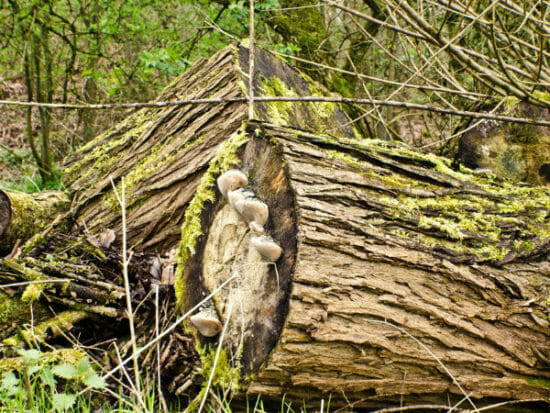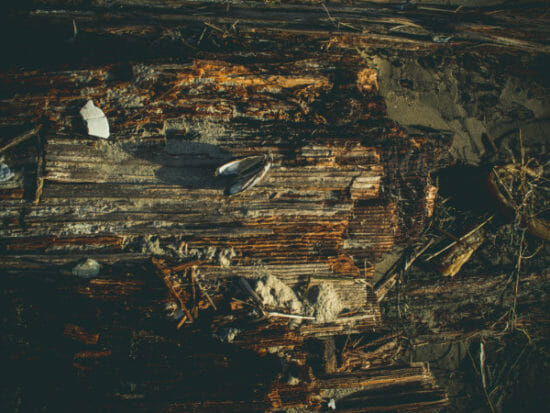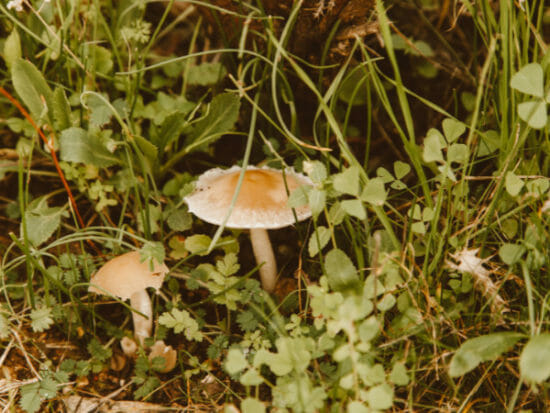What is Poisonous Wood? How to Spot the Difference
Have you heard about the manchineel tree or poisonous wood? It’s sometimes referred to as beach apple or poison guava. If you didn’t know, the manchineel tree has another Spanish name: Arbol de la Muerte – which translates to mean tree of death.
That’s because the manchineel tree is so deadly that its thick, milky sap – which exudes from every pore in the tree – can cause severe blisters when it comes in contact with skin. Eating its’ apple can provide agony, causes severe vomiting, and prove fatal.
Burning manchineel wood can cause severe eye inflammation and even temporary blindness, and standing under a manchineel tree when it rains can burn your skin!
Yet, interestingly carpenters in the Caribbean – where the manchineel grows – have used its wood to build furniture for centuries. Toxic woods and poisonous trees exist, and recognizing them – and even working with them – can be very important.
Let’s dive into wood that is poisonous and ways to protect yourself from the toxins without further ado.
Poisonous Wood – All You Need to Know
Most types of wood you come across are generally safe to touch and work within carpentry, but some will cause major health issues, both short and long-term. One of the main ways wood can affect your health is via wood dust.
Wood dust is often created when the wood is being cut or shaped. Sawmills, furniture factories, and cabinet factories are guaranteed to have a high amount of wood dust. It is also very common in the carpentry industry.
When people cut or shape wood, they can get exposed to wood dust, inhaled, and deposited in the airways.
Poisonous Wood Dust
While inhaling wood dust is never a good thing, some types of wood produce dust that can be very harmful. Because trees generally create toxins and chemicals that keep the wood safe from insects, viruses, and fungi, these toxins can be spread via wood dust.
You may find that you are allergic to particular types of wood dust, and that is because of those toxins and chemicals in the wood. General wood dust might feel like an irritant, and cause respiratory problems, at best.
However, some woods, like willow, can cause nasal cancer. That’s toxic wood dust. Touching wood could cause zero irritation, even though inhaling the dust from it can be fatal.
Some trees have little toxin on their wood, but most of it is on their leaves and fruits. Other trees have the toxin on the bark, which can be removed before work is started on the wood.
While wood dust can be a problem, it is possible to get allergic reactions from some types of wood by coming into contact with them. Exotic tropical hardwoods like rosewood can cause breathing problems, nausea, and cancer.
Poisonous Firewood – Toxic Woods Smoke
If there’s toxic wood, it only makes sense that there’s toxic firewood. If wood dust can cause severe allergic reactions, the same goes for inhaling burning wood. Because quite a few people enjoy camping, it is important to consider the type of wood used at bonfires or campfires.
Smoke from burning wood isn’t good to inhale, but some wood smoke can be very toxic and cause serious damage to your lungs. The eyes and the skin could also be badly affected, so it’s important to be careful when choosing wood for campfires.
Whether inhaling wood dust or smoke, there is usually some toxicity involved.
Wood Toxicity
Generally, there are three categories of wood toxicity, and it mostly depends on the reactions faced by the affected person. The degree and the type of reaction are determinants of how susceptible a person is to particular allergies and the amount of wood dust or wood smoke inhaled.
The three general categories include of toxicity include irritation, sensitization, poisoning, and carcinogens.
Irritation
It is easy to feel or get immediate irritation when wood dust enters your eyes, or wood smoke enters your respiratory system. The eyes are often irritated because fine dust like wood dust can dry out moisture wherever it settles.
While irritation can be immediate, it can also be prolonged. This mostly depends on how long a person is exposed to wood dust or the concentration.
It’s important to be careful about some wood dust because you might not recognize that you’re irritated. Certain woods like walnut give off pleasant-smelling odors and little wood dust, but the nice scents are still caused by chemicals that can be toxic, depending on exposure and concentration.
Sensitization
Sometimes, wood can have chemicals that cause an allergic reaction after continuous or repeated exposure. These chemicals are called sensitizers, and they’re unique compared to irritation.
While irritation will often affect everyone, sensitization is very specific to each person and can take some time to develop. While you may react irritably to a cloud of wood dust, a friend of yours may not. However, it takes time for sensitization to occur, although in some cases, sensitization can happen from your first touch of the wood.
You might work on wood and realize you do not react to the wood or dust. This doesn’t mean that you’re not going to, especially if sensitization occurs. The first few times you use that wood might show no irritation, but you may develop a particular reaction if you remain exposed to the wood and wood dust over time. This is why it’s always important to minimize exposure to wood dust, even if you don’t feel any reactions at first.
Poisoning
Although it is rare, there are very deadly chemicals found in natural wood. However, the poison usually gets secreted from most trees and plants’ bark, sap, or leaves. Only rarely would the poison be located within the wood itself.
When working with wood, much of your worries should come from the first two categories; Irritation and sensitization.
Carcinogens
If you remain exposed to wood dust for a very long time, it can directly cause cancer of the nasopharynx. This takes time to develop, usually several decades of consistent unprotected work and contact with wood dust.
Along with other serious illnesses, the risk of getting this disease can be reduced if work with wood and wood dust is minimal.
Health Issues Associated With Dust Wood
While exposure to wood dust may cause some adverse reactions to the eyes nose and cause allergies, workers may also experience shortness of breath, sore throat, severe throat irritation, and dryness. Conjunctivitis(eye inflammation) and rhinitis (runny nose) are also experienced by woodworkers who become exposed to wood dust.
When skin is exposed to wood dust, dermatitis is a very common result, often caused by the chemicals in the wood. The skin can become red, itchy, and even blister.
Medium-term health implications include respiratory-related issues. Some woodworkers have had decreased lung capacity or an allergic reaction in their lungs after consistent exposure to wood dust. These can come with headaches, sweating, nausea, breathlessness, and even severe chest tightness.
When the body absorbs a chemical from wood dust, it can cause anything from irregular heartbeat to stomach cramps and headaches.
Western red cedar is a highly toxic wood species because of the chemicals in its wood dust. It can cause dermatitis on contact and eye irritation, and even asthma. Beech is another wood that is toxic to species. It is capable of causing dermatitis, asthma, and even nasal cancer.
Poisonous and Injurious Plants You Should Be Careful About Handling
It isn’t easy to rank how you might react to a particular type of wood or even how much risk each wood might offer. However, various standards can help determine the general risk that certain wood species provide.
Someone has reacted negatively to nearly every wood in the world, and there have been near-fatal occurrences as well. So, we can often depend on woodworkers’ history and previous experiences to identify woods with high risk.
These are a broad range of wood species that can cause different reactions (irritation, sensitization, or poisoning). They also have different body sites where the reactions can occur, mostly in the respiratory system, the eyes, and the skin. The potency of each reaction is also given per wood species, using a plus (+) sign to determine the potency level. One plus (+) shows the lowest potency, while four pluses (++++) show the highest potency. The source of the reaction is also given: for some woods, the source can be the fine dust and the bark, while it can be the wood itself for others.
Bald Cypress
- Sensitizer
- Respiratory
- Potency: +
- Dust
- Rare incidence
BalsamFir
- Sensitizer
- Eyes, skin
- Potency: +
- Leaves, bark
- Common incidence
Beech
- Sensitizer, nasopharyngeal cancer
- Eyes, skin, respiratory
- Potency: ++
- Leaves, bark; dust
- Common incidence
Birch
- Sensitizer
- Respiratory
- Potency: ++
- Wood, dust
- Common incidence
black locust
- Irritant, nausea
- Eyes, skin
- Potency: +++
- Leaves, bark
- Common incidence
Blackwood
- Sensitizer
- Eyes, skin
- Potency: ++
- Dust, wood
- Common incidence
Boxwood
- Sensitizer
- Eyes, skin
- Potency: ++
- Dust, wood
- Common incidence
Cashew
- Sensitizer
- Eyes, skin
- Potency: +
- Dust, wood
- Rare incidence
Cocobolo
- Irritant, sensitizer
- Eyes, skin, respiratory
- Potency: +++
- Dust, wood
- Common incidence
Tahoma
- Irritant
- Eyes, skin
- Potency: ++
- Dust, wood
- Common incidence
Ebony
- Irritant, sensitizer
- Eyes, skin
- Potency: ++
- Dust, wood
- Common incidence
Elm
- Irritant
- Eyes, skin
- Potency: +
- Dust
- Rare incidence
Goncaloaves
- Sensitizer
- Eyes, skin
- Potency: ++
- Dust, wood
- Rare incidence
Greenheart (Surinam)
- Sensitizer
- Eyes, skin
- Potency: +++
- Dust, wood
- Common incidence
Hemlock
- Nasopharyngeal cancer
- Respiratory
- Dust
- Unknown
Iroko
- Irritant, sensitizer, pneumonia
- Eyes, skin, respiratory
- Potency: +++
- Dust, wood
- Common incidence
Mahogany (Swietenia)
- Sensitizer, pneumonia
- Skin, respiratory
- Potency: +
- Dust
- Unknown
Mansonia
- Irritant, sensitizer, nausea
- Eyes, skin
- Potency: +++
- Dust, wood
- Common incidence
Maple (C.Corticale mold)
- Sensitizer, pneumonia
- Respiratory
- Potency: +++
- Dust
- Common incidence
Myrtle
- Sensitizer
- Respiratory
- Potency: ++
- Leaves, bark, dust
- Common incidence
Oak
- Sensitizer, nasopharyngeal cancer
- Eyes, skin
- Potency: ++
- Leaves, bark, dust
- Rare incidence
Oleander
- A direct toxin, nausea
- Cardiac
- Potency: ++++
- Dust, wood, leaves, bark
- Common incidence
Olivewood
- Irritant, sensitizer
- Eyes, skin, respiratory
- Potency: +++
- Dust, wood
- Common incidence
Padauk
Sensitizer, nausea
Eyes, skin
Potency: +
Dust, wood
Rare incidence
Pauferro
- Sensitizer
- Eyes, skin
- Potency: +
- Dust, wood
- Rare incidence
Perobarosa
- Irritant, nausea
- Respiratory
- Potency: ++
- Dust, wood
- Unknown
Quebracho
- Irritant, nasopharyngeal cancer, nausea
- Respiratory
- Potency: ++,?
- Dust, leaves, bark
- Common incidence
Redwood
- Sensitizer, nasopharyngeal cancer, pneumonia
- Skin, eyes, respiratory
- Potency: ++,?
- Dust
- Rare incidence
Rosewoods
- Irritant, sensitizer
- Skin, eyes, respiratory
- Potency: ++++
- Dust, wood
- Common incidence
Satinwood
- Irritant
- Skin, eyes, respiratory
- Potency: +++
- Dust, wood
- Common incidence
Sassafras
- Sensitizer, nasopharyngeal cancer, direct toxin, nausea
- Respiratory
- Potency: +,?
- Dust, wood, leaves, bark
- Rare incidence
Sequoia
- Irritant
- Respiratory
- Potency: +
- Dust
- Rare incidence
Snakewood
- Irritant
- Respiratory
- Potency: ++
- Dust, wood
- Rare incidence
Spruce
- Sensitizer
- Respiratory
- Potency: +
- Dust, wood
- Rare incidence
Walnut, Black
- Sensitizer
- Skin, eyes
- Potency: ++
- Dust
- Common incidence
Wenge
- Sensitizer
- Skin, eyes, respiratory
- Potency: ++
- Dust, wood
- Common incidence
Western red cedar
- Sensitizer
- Respiratory
- Potency: +++
- Dust, leaves, bark
- Common incidence
Willow
- Sensitizer, nausea
- Respiratory
- Potency: +
- Dust, wood, leaves, bark
- Unknown
Teak
- Sensitizer, pneumonia
- Skin, eyes, respiratory
- Potency: ++
- Dust
- Common incidence
Yew
- An irritant, direct toxin, nausea
- Skin, eyes, cardiac
- Potency: ++++
- Dust, wood
- Common incidence
Zebrawood
- Sensitizer
- Skin, eyes
- Potency: ++
- Dust, wood
- Rare incidence
Keeping yourself safe
Taking safety measures to keep yourself safe while working with wood can keep you free from irritation in the short term and safe from cancer in the long term. So here are a few safety tips you can use before heading off to work on some wood.
Dusk mask
Call it the simplest or the most obvious, a dusk mask makes it easy to keep the wood dust particles. Getting a dusk mask should be easy as they are available in most hardware stores, and you should get one with an exhalation valve on the front. These are mostly made from disposable cloth and should be used just once. They’re great for impromptu work with wood.
Respirator
It’s a great improvement from the dusk mask, mainly because it has better efficiency in filtering airborne particles. Respirators also have a replaceable filter pad, so you never have to buy a new respirator.
Dust collector
This brilliant tool is an important piece of equipment to any woodworker. The dust collector can be fitted with an added filter to improve the collection of smaller particles.
This important tool can be great for sucking up the dust in the air, so you don’t have to remain exposed to wood dust for long.
Minimize skin contact
The best way to limit the skin contact you make with poisonous wood is to reduce exposure to skin areas. Wearing long sleeves, long pants, and even safety gloves can improve your working conditions dramatically.
Related Articles
Conclusion
While wood and woodwork are both highly popular, never ignore the serious implications that commonly toxic woods can have on your health. Because wood dust is the major cause of such health implications, it is important to remove all forms of exposure to it.
Some wood dust might smell nice, but it does not remove its irritable, sensitizing, or deadly qualities. With rosewood capable of causing eczema and oak capable of causing cancer, minimizing contact with wood dust remains ever important.






